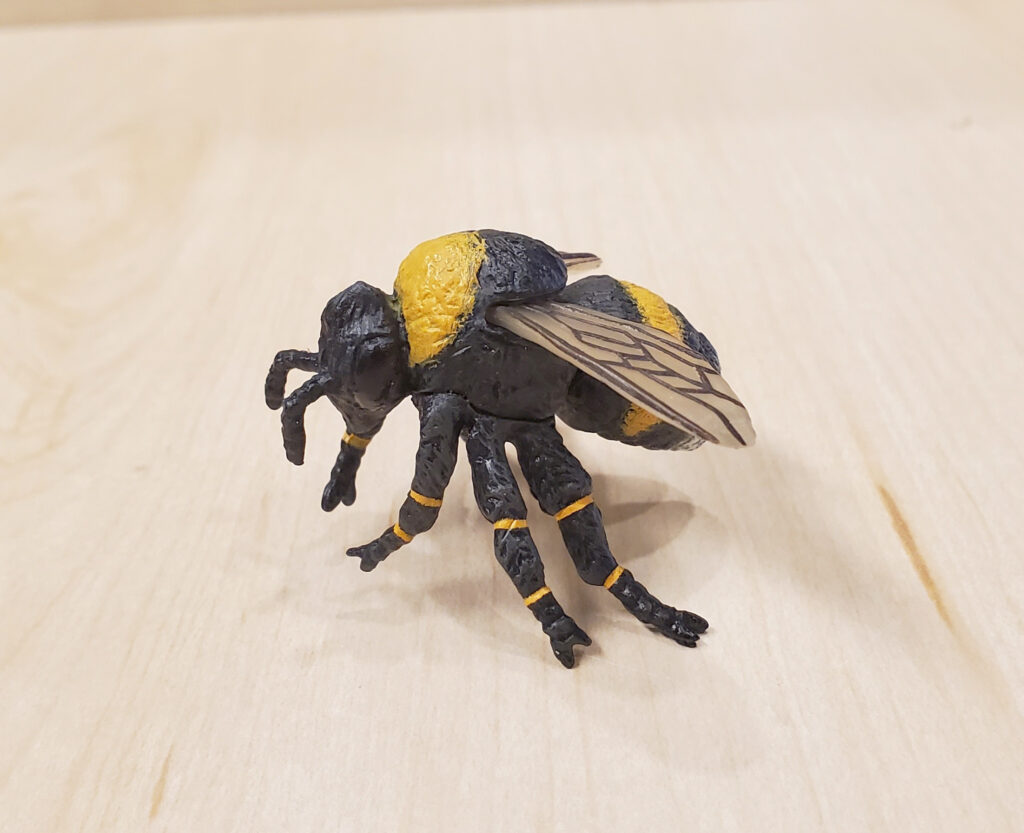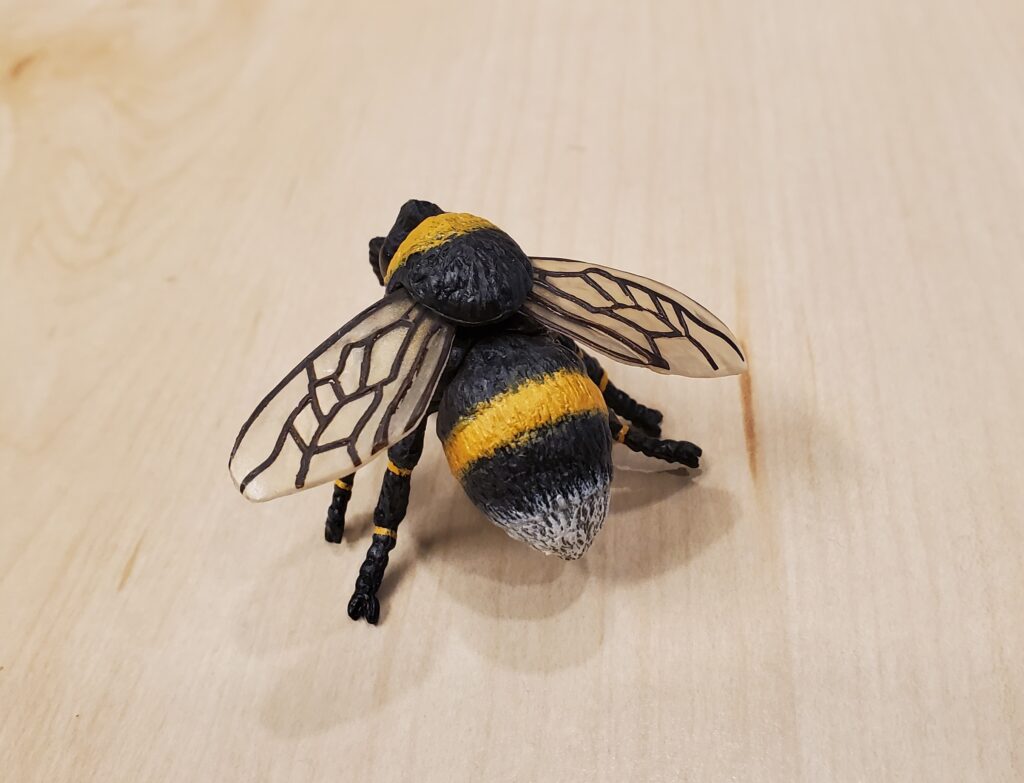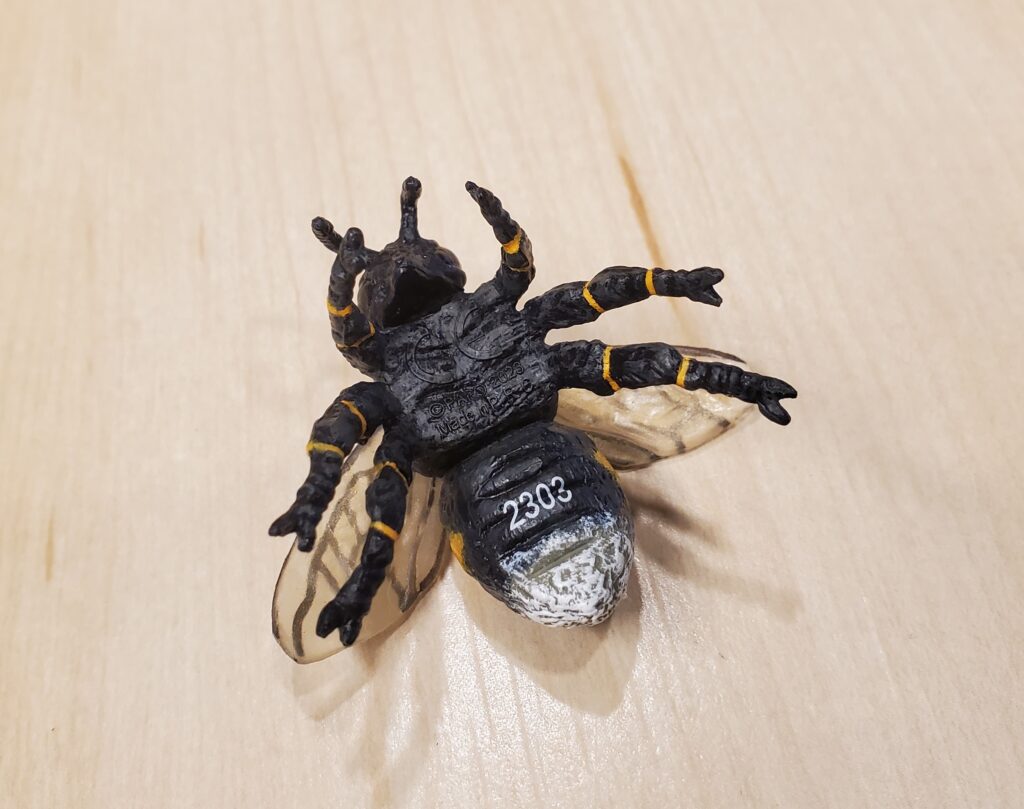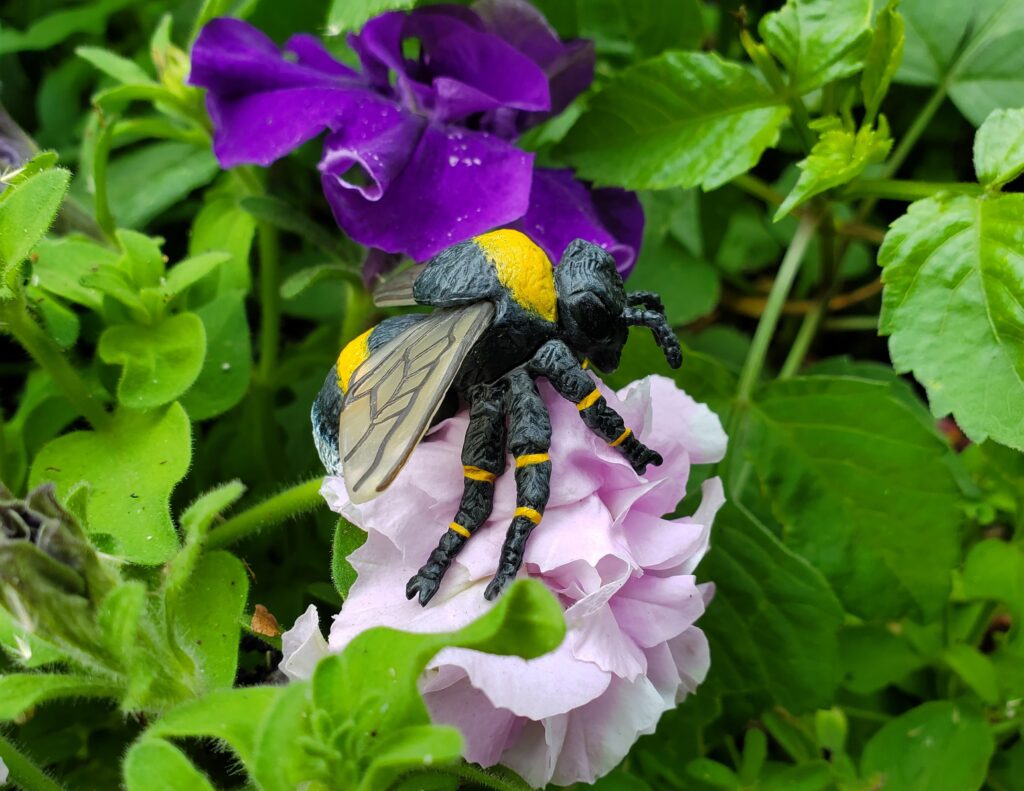The genus Bombus, which includes the bumble bees, consists of over 250 species worldwide. They occur in most terrestrial habitats throughout the Americas and the Palearctic, but are absent in much of Africa, the southern Middle East, much of the Indian subcontinent, Australia, and New Zealand (although they have been introduced to the New Zealand and Tasmania). Bumble bees, as a group, are not uncommon in toy form. They are a staple for most ‘bin-style’ sets, such as those by Toy Major and all the distributors that have used their sculpts, as well as some tubes (e.g. CollectA, 2020). They have even been made by many of the well-known Western companies in their various insects or wildlife lines, including Bullyland (1998), Safari Ltd. (Smithsonian Insects in 1994 and Authentics Insects in 1995), and CollectA (2011). The vast majority of bumble bee toys have not been marketed to the species level; the only two that I am aware of are the golden northern bumble bee (B. fervidus) produced by Play Visions in 1996 and the rusty patched bumble bee (B. affinis) produced by Yowie Group in 2021. Today we will be looking at the 2023 version by Papo, part of their ever-growing line of insects and arachnids!

I am sure getting a species-level ID on this figure would be challenging, if not impossible. Even if we just take Papo’s home country of France into the equation, that still leaves over 40 species. It was probably modeled after the white-tailed bumble bee (B. lucorum), based on the color and its common status in both France as well as much of the rest of Europe, although it should be noted that B. lucorum belongs to a complex with two morphologically identical species, the northern white-tailed bumble bee (B. magnus) and the cryptic bumble bee (B. cryptarum). I will database it as B. lucorum for my collection, but it’s really the collector’s choice.

The body length is approximately 3.8 cm, for a scale of 3.2-1-2.1:1 for a worker of B. lucorum, or roughly 3:1-2:1 for bumble bees generally.

The sculpt is, well, a bumble bee. It’s got all the hallmark ‘bee’ features, with a more robust body characteristic of bumble bees over honey bees. I do like that its pose is propped up on its legs, rather than being sprawled out with its six legs going straight out from the body in different directions. Papo has been known to reuse sculpts, even with some of their recent insects (the monarch and clouded yellow butterflies, for example), but I checked and nothing here was taken from their 2020 honey bee (the wing venation is very similar, but the wing sculpt itself is different). Speaking of wings, there appears to be only two wings present; the hind wings appear to be lacking! In their honey bee, the hind wings are sculpted as part of the forewings, but on the bumble bee, the hind wings seem to be outright missing (unless it’s implied their underneath the front wings). The head, body, and legs are all sculpted with an indication of dense vestiture, characteristic of the hairy nature of bumble bees. The aforementioned wing venation is stylized and not completely accurate (but also not entirely that far off).

The color is typical of that of most bumble bee figures, with alternating bands of black and yellow-orange. Part of my justification for calling this B. lucorum is the color. It has a yellow collar and a yellow band near the base of the abdomen (but not going all the way to the base), and a white terminal band. For B. lucorum, both workers and queens would have this color; in the male, there would be some yellow at the posterior base of the thorax as well. There is also yellow at the juncture of each of the major leg joints. The wings are transluscent with brown veins.

Overall this is a pretty typical bumble bee toy. Despite the apparent lack of hind wings, I think it is a much better sculpt than the one by CollectA or anything by Safari Ltd., and so if one wanted a bumble bee in their collection, this would be a great choice. It’s accurate enough to be easily recognized as a bumble bee and its small size means it won’t take up much shelf space. Recommended for general collectors and parents of children fascinated by bumble bees!
I tried to photograph it on flowers in the garden in front of my apartment, but the toy was too heavy to be supported by most of them. Did manage a couple, though:


Disclaimer: links to Ebay and Amazon on the AnimalToyBlog are affiliate links, so we make a small commission if you use them. Thanks for supporting us!



